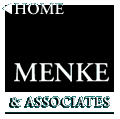Because of the length of this article, we have broken it into several sections.
Below is the index, which is linked to each section. If you are interested
in a particular subject, click on it to go there. Otherwise, you will find
a link at the bottom of each section that offers you the choice of returning
to the index or continuing on to the following section.
TABLE OF CONTENTS:
1. INTRODUCTION
2. TAX-FREE ROLLOVER
Alternative to
Sale
Investment
Diversification
Charitable
Contributions
Private
Foundations
3. CAPITAL GAINS
4. DIVIDEND DEDUCTION
5. MECHANICS OF TAX-FREE ROLLOVER TRANSACTIONS
6. MECHANICS OF ESOP LOAN TRANSACTIONS
7. CASH FLOW INCREASES
8. MAXIMIZING EMPLOYEE INCENTIVES
9. REPLACEMENT OF PROFIT SHARING PLANS
10. DISADVANTAGES
11. HOW THE PLAN IS DESIGNED
12. ESOPs IN S CORPORATIONS
13. OUR SERVICES
Installation
Communications
Administration
INTRODUCTION
Information in this booklet has been developed for those owners of privately-held
businesses who are interested in liquefying some portion of the equity which
has accumulated in their companies. We have assumed that many of our readers
may be interested in accomplishing this objective without sacrificing the
identity of their companies, jeopardizing the jobs of valued employees or
relinquishing control of the companies they own.
An ESOP installation may provide the optimal solution for business owners
hoping to achieve all of these goals. An ESOP (Employee Stock Ownership Plan)
is a powerful and versatile business and financial tool which can help a
business owner to accomplish the following:
-
The ESOP trust establishes the fair market value of the company's privately
held stock and it also functions as the marketplace for that stock.
-
ESOPs assure flexibility by allowing an owner to liquefy whatever portion
of his ownership he chooses. The owner does not have to sell the entire company
in order to liquefy a portion of the accumulated equity in the company.
-
In situations where the company treasury does not have resources sufficient
to liquefy the privately-held stock being conveyed to the ESOP, the ESOP
is allowed to borrow the funds necessary to complete the transaction.
-
Moreover, the company owner does not have to relinquish control of his company.
Regulations governing ESOP operations allow the owner to sit on the committee
which oversees the ESOP. Indeed, the owner can be the sole committee member
on the ESOP Committee if he so chooses.
-
If 30% or more of the company's outstanding stock has been sold to the ESOP
at the completion of the transaction, and the proceeds are reinvested in
qualified replacement securities within 12 months from the date of sale,
the selling shareholder can defer payment of income tax on the sale of privately
held stock to the ESOP.
-
The ESOP establishes an incentive-based retirement program for employees
in the owner's company, making them beneficial stock owners in the company
where they work. This incentive can produce very positive benefits for the
company's bottom line profits. National studies reveal that on average ESOP
companies tend to be 8 to 11% more profitable than their non-ESOP counterparts.
As a direct consequence of sharing ownership with his employees, the business
owner reaps the added benefit of increased profits for himself and for his
company.
-
For those business owners who are interested in charitable activities, the
ESOP can also facilitate philanthropy. Just as the ESOP provides a fair market
value and a ready market for shares of company stock which the owner or other
shareholders may wish to liquefy, the ESOP can also assure a reliable value
and a ready market for any shares of stock the owner may wish to convey to
a deserving charity.
The remainder of this booklet discusses and more fully explains these and
other capabilities of this versatile and powerful business and financial
tool.

Back to the Index
Next Section: Tax-Free Rollover
HOME |
ABOUT ESOPs |
OUR SERVICES |
OUR FIRM
TOMBSTONES |
CONTACT US
|

